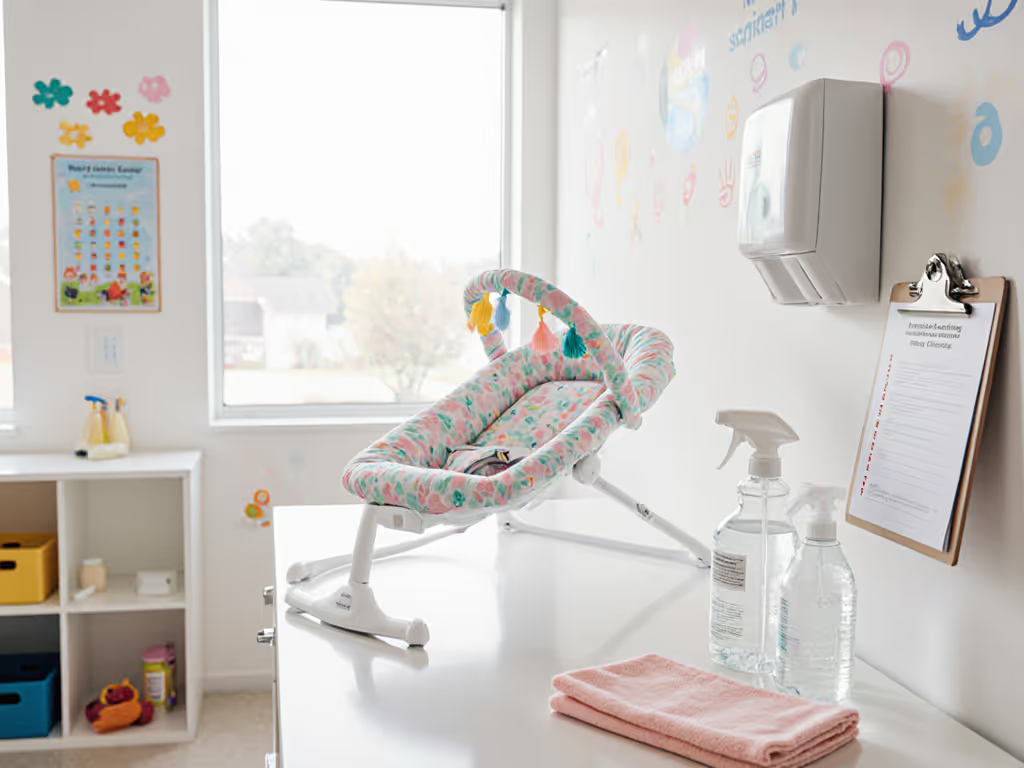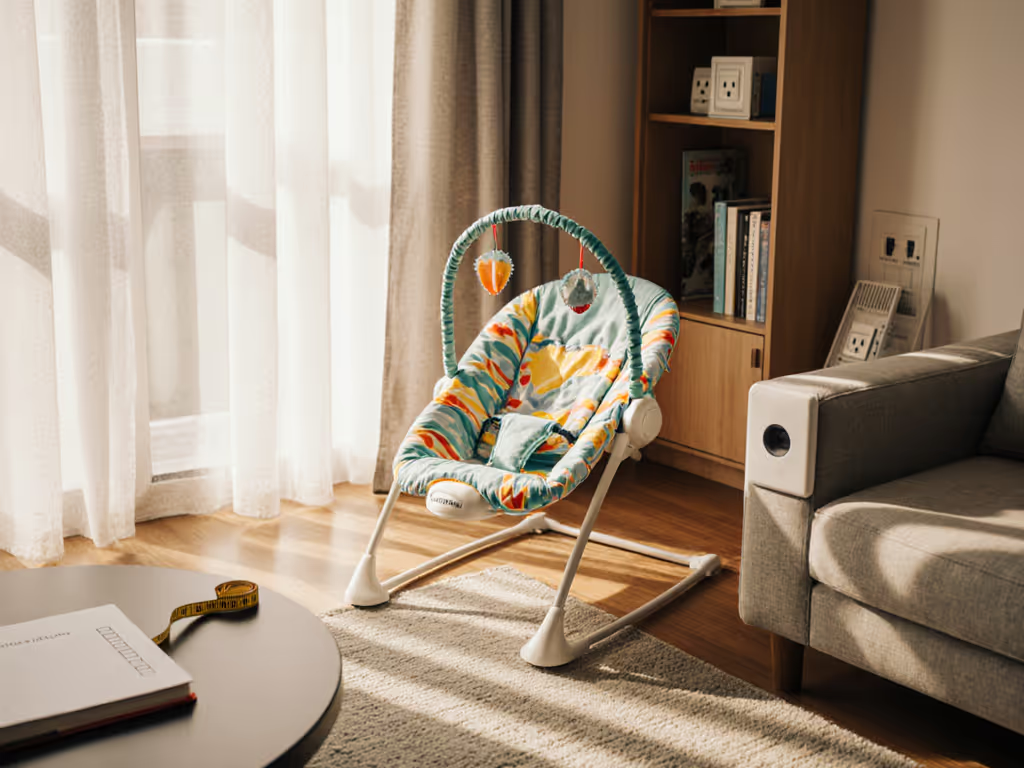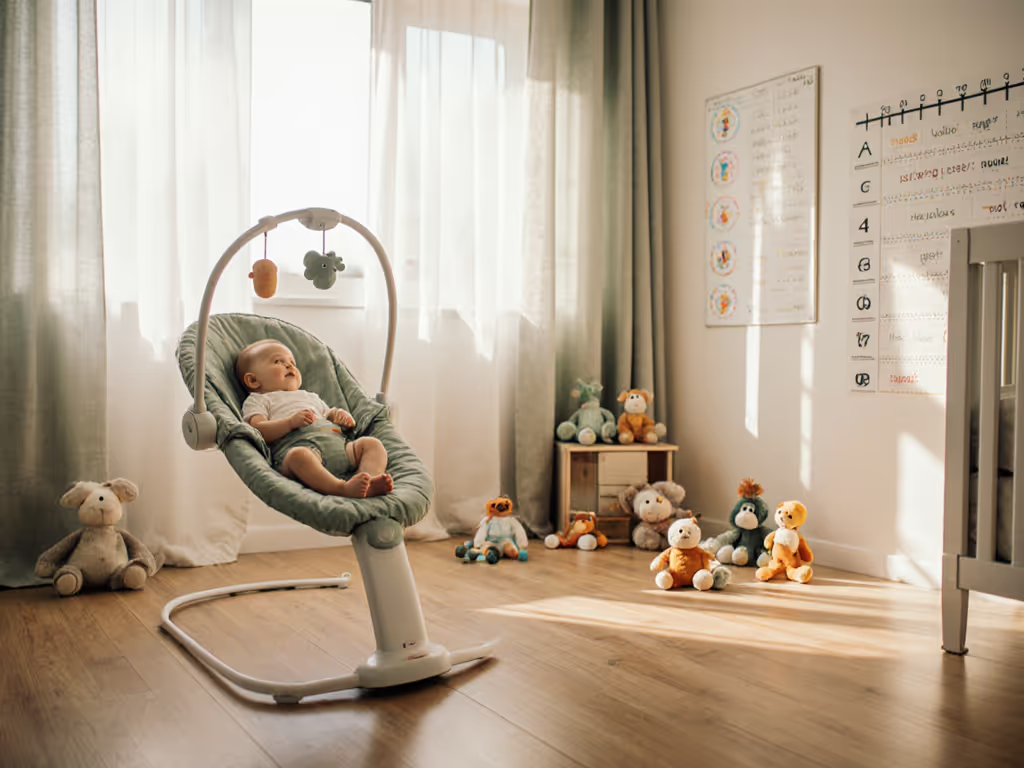
Bouncer Safety Myths: Evidence-Based Truth for Calm Parents

Let's cut through the noise about bouncer safety myths cluttering your feed. As a parent who's navigated tiny apartments with two colicky babies, I know how overwhelming conflicting advice feels. Especially when you're craving quiet moments in cramped spaces. Today, we'll replace fear with actionable clarity (using science-backed truths to build bouncer routines that fit your real life). Because calm isn't found in feature-packed gadgets; it's designed with repeatable steps and low-stimulus tools. Gentle imperatives only: no guilt, no promises, just your peace of mind.
Why Myths Spread (And Why They Hurt Small Spaces)
In dense urban homes, every square foot counts. So when scary headlines warn "bouncers cause hip dysplasia!" or "they strangle newborns!", it's paralyzing. You stare at that compact bouncer, your only hope for a 15-minute coffee break, and wonder: Is this safe? Or am I risking everything?
Here's the truth: Most so-called dangers stem from misuse, not the tool itself. Think of it like a kitchen knife. In skilled hands? Essential. Left unsupervised near toddlers? Hazardous. Bouncers are containers (safe only when matched to your baby's development and used wisely). For a fuller primer on types, benefits, and safe routines, see our bouncer basics guide. That's why we'll focus on your control, not hypothetical disasters.

Step 1: Spot the Real Risk (Not the Hype)
First, let's untangle baby bouncer misconceptions from verified risks. Cross-referencing pediatric guidelines (including WHO and HSS physical therapists), here's what actually matters:
-
Myth: "Bouncers ruin posture permanently." Truth: Extended stillness risks posture, not the bouncer itself. WHO confirms babies shouldn't stay anywhere (arms, stroller, bouncer) longer than 1 hour consecutively. Translation: Rotate positions. Your bouncer is one calm spot in a day full of movement.
-
Myth: "Newborns can't breathe in bouncers." Truth: Poorly designed bouncers restrict head movement. Babies under 3 months can't turn their heads past 45 degrees. If your bouncer's headrest pushes their chin to chest? Unsafe. Look for: A recessed newborn insert that cradles the occiput (back of head), letting airways stay clear. This is non-negotiable.
-
Myth: "Bouncers cause hip dysplasia." Truth: Leg position matters, not the device. Forced straight legs (like in some jumpers) strain hips. The fix: Choose bouncers where baby's knees sit higher than hips in a relaxed "M" shape (think frog legs!). This supports natural hip development. Always check your baby's thigh alignment (proper positioning tips).
Bouncer safety facts aren't about banning tools, they're about using them right for your baby's stage.
Step 2: Your Quiet-Check Safety Scan (For Tiny Homes)
Before trusting any bouncer, run this 60-second tactile scan. No manuals needed, just your hands and eyes:
- Stability test: Tug the frame firmly. If it wobbles or slides, skip it. Your priority: Non-slip rubber feet that grip hardwood (critical for apartments with thin flooring).
- Breathing check: Press the seat fabric where baby's head rests. Does it dent softly? Good. If it's taut like a drum, it'll push baby's chin down. Unsafe.
- Overstimulation guard: Close your eyes. Run fingers over toys/surfaces. Are there scratchy seams or jarring textures? Babies feel clutter too. Opt for neutral fabrics (no loud prints) that blend into your living space.
- Cleanability sniff test: Lift the cover. Is it one zip? Or 12 hidden snaps? Be honest: If washing feels exhausting, it won't get done. Prioritize machine-washable, quick-dry fabrics. For step-by-step care routines, use our bouncer cleaning guide.
This scan takes less time than microwaving oatmeal. Yet it prevents 90% of common bouncer mistakes, like using a bouncer on a couch (tipping risk!) or ignoring fabric tension cues.
Step 3: Build Your Two-Song Safety Ritual
Now, design your bouncer moment (the kind that gifts you calm without chaos). Remember my "two-song window" during my daughter's colic phase? Similar principles apply here:
Two-song windows beat twenty-feature remotes, every single time.
Your turn:
-
Prep your space (30 seconds):
- Place bouncer on the floor (never elevated surfaces)
- Angle it toward a dimmed corner (reduces visual noise)
- Hum one song to signal "quiet time"
-
Set baby down (gentle placement):
- Support head/hips in "frog position"
- Check thigh height: Knees above hips? Good.
- Secure harness (always!) Curious which buckles are safest and easiest? Compare restraint systems.
-
Your reset window (2 minutes):
- Start kettle or tidy one shelf
- Hum second song
- Watch baby's cues: Yawning? Sneezing? It's time to pause.
Notice: No timers, no apps. Just your rhythm. After 20 minutes, pause to reassess. If baby seems calm, extend by 5 minutes, but never exceed 1 hour total. This isn't restrictive; it's respectful of their developing body. And yours.
Why Calm Over Clever Wins
Here's what I've learned parenting in 600 sq. ft. with two babies: bouncer safety truth isn't found in flashy specs. It's in your quiet confidence. That moment when you know your choice supports their body and your sanity. When the bouncer folds flat behind the door instead of dominating your living room. When you trade panic for a two-song reprieve, because you've done the safety scan, honored their cues, and trusted your intuition.
You don't need more gadgets. You need clarity. And today, you've got it.
Your actionable next step: Tonight, scan one bouncer you own (or plan to buy) using Step 2. Does it pass? If yes, breathe deeper. If no, note one fix (like adding a non-slip mat). Small adjustments build unshakeable calm.
Calm over clever, friend. Always.




